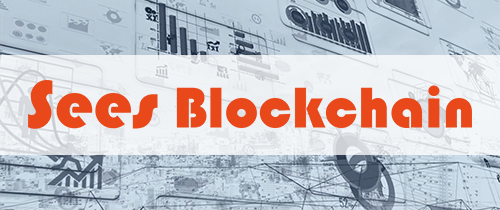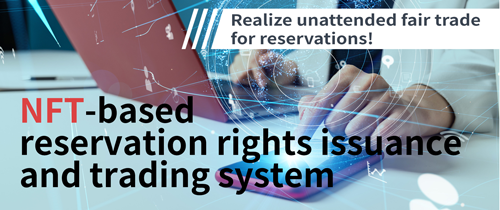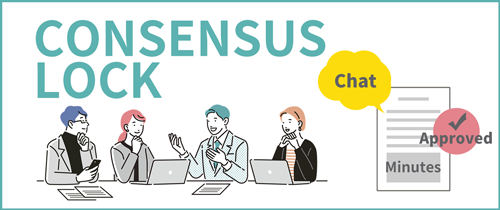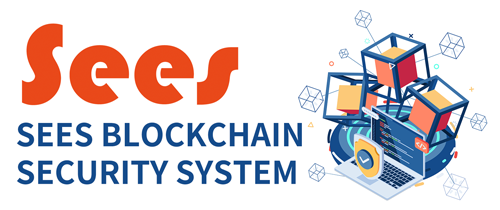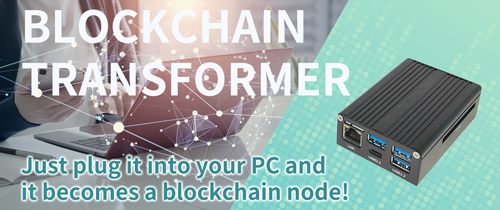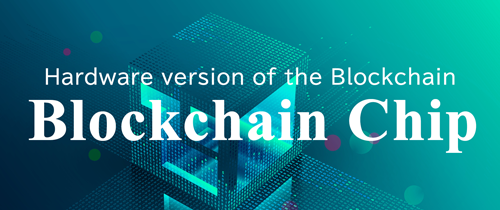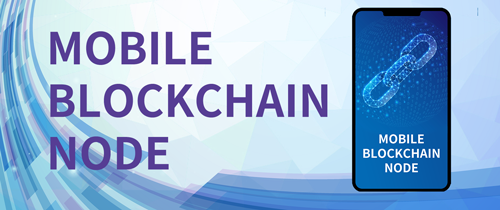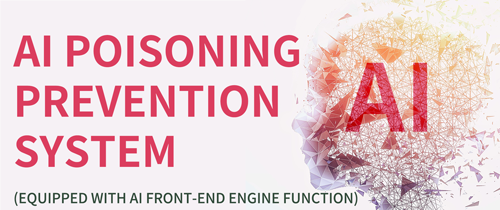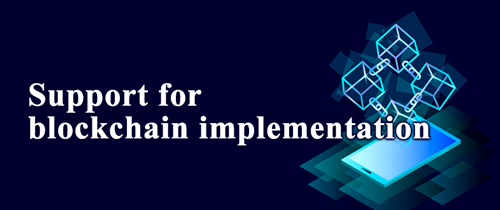SeesSees Co., Ltd.

Blockchain Learning ToolsHakoniwaSystem
This product is a tool for learning the Ethereum blockchain, and as a rudimentary educational material for training blockchain engineers who will be needed in the future, it is a system like a "box garden" where the blockchain can be operated and checked in a local environment.

1What is the Ethereum Blockchain?
Ethereum
Ethereum is well known as the second largest virtual currency by market capitalization after Bitcoin, but the virtual currency Ethereum (ETH) is only its token. Ethereum was originally an open source blockchain application development platform using smart contracts, and numerous business applications have been created using this platform.

Ethereum Blockchain
Decentralized applications (DApps) utilizing blockchain technology have been gaining attention in recent years. The Ethereum blockchain is being widely applied to DApps because of the flexibility of smart contracts to "automate contracts" on the blockchain and the ability to write data to the blockchain.

contract
Contract means "agreement," but it is a kind of "macro" that runs on the Ethereum blockchain. There are several languages for writing contracts, but the current mainstream language is "Solidity" (Solidity); the Solidity compiler compiles sources written in the Solidity language to generate a machine language.*Macro refers to a technology for automating complex computer operations.(Example: Microsoft Excel macro functions, etc.)

consensus
Consensus means "agreement" and refers to the consensus algorithm for block generation.In an administratorless blockchain, there is a consensus algorithm designed to correct fraudulent blocks, and the algorithm avoids unauthorized data tampering. For more information on Ethereum's consensus algorithm, please see the learning guide after purchasing the product.

Original cryptocurrency ・ Unique token
By using contracts, you can create your own virtual currency separate from Ethereum.With proprietary virtual currencies, a mechanism to manage coin balances is created with a contract, which is then deployed to manage balances for each account address (wallet). However, in order to be recognized as a proprietary virtual currency, it must require its own consensus and be listed on an exchange, and those that are unlisted or use the Ethereum consensus are called "tokens.

2What this product can do
- The contents of the Ethereum blockchain are visible!
- You can create your own contract!
- The operation can be checked by changing the conditions for issuing coins!
- It is also equipped with a money transfer function and a conversion machine for convenience!
① The contents of the Ethereum blockchain are visible!
Block list, block contents, transaction contents, and wallet balance at a glance!
- Block list
- You can see the history of block occurrences.
- Block Contents
- You can see what transactions are in the block.
- Transaction Content
- Transaction details can be displayed.
- Wallet Balance
- Real-time balance display shows results immediately.



② You can create your own contract!
First, you can select six sample contracts and go from deployment to transaction execution!
- Hello World
- A simple function that returns the phrase "Hello, World!
- Basic arithmetic operations
- Ability to add, subtract, multiply, and divide two whole numbers
- Written oracle
- Ability to return a random result depending on when it is executed
- Sum total, Sum total product
- Ability to find the sum or product of integers from 1 to n for a given value of n
- Person
- Ability to have "name" and "age" as internal states and introduce oneself based on this information
- Donation
- Ability to make a donation

You can check the operation of your own contract made in Solidity! (There are also examples so you can make them easily)
③ The operation can be checked by changing the conditions for issuing coins!
Choose from four coin issuance terms and conditions to execute!
- None
- The coins are not issued.
- Lottery
- Five tokens are paid out at random.
- Numerical value
- If the specified number is divisible by 3, 4, 5, or 7, tokens are distributed according to the value.
- Palindrome
- If the specified string is a palindrome, tokens are distributed according to its length.

Creation of proprietary tokens is also possible!
( The terms and conditions of coin issuance can be edited at your own risk with a backup of the file.)
④ It is also equipped with a money transfer function and a conversion machine for convenience!
In addition to manual money transfers, transactions can be generated by automatic random money transfers!
Unit conversions are easily understood with a converter (Wei→Ether)!

- Experiment with remittance by selecting users!
- Visual confirmation of remittance results
- Detailed data held in the blockchain can also be viewed!
3Operating Environment and Setup
Operating environment
- Terminal
- PC running Windows (PC/AT compatible)
- OS
- Windows10 *Any edition is acceptable *64-bit OS
- CPU
- CPU equivalent to Intel Core-i5-6500 3GHz * 64-bit
- Memory
- 8GB or more *16GB recommended
- HDD
- 50GB or more
- Browser
-
Google Chrome 68.0 or later, Mozilla FireFox 61.0 or later
- Chrome or FireFox is recommended.
- It does not work with Microsoft Internet Explorer.
- We recommend a browser size of 1400x900 or larger.
- Other
- Oracle VM VirtualBox must be running.
4Accessory(Digital media)Japanese and English versions are available.
| Content | - P - |
|---|---|
| 1. Introduction | 2 |
| 1.1. Operating environment | 2 |
| 1.2. About Licenses | 3 |
| 2. Install | 4 |
| 3. Uninstall | 9 |
| Content | - P - |
|---|---|
| 1. Caution | 3 |
| 2. How to install/uninstall | 3 |
| 3. Startup and shutdown | 4 |
| 3.1. Start | 4 |
| 3.2. Cessation | 7 |
| 4. Operating method | 8 |
| 4.1. Main screen | 8 |
| 4.2. Contract Selection Dialog | 18 |
| 4.3. Contract Editor Screen | 21 |
| 4.4. Placed contract list screen | 23 |
| 4.5. Placed contract details screen | 25 |
| 4.6. Coin Issuance Condition Selection Dialog | 28 |
| 4.7. Coin Issuance Condition Execution Screen | 30 |
| 4.8. Control Panel Dialog | 32 |
| 4.9. Converter | 37 |
| 5. Connection with terminal emulator | 38 |
| 6. In times like these | 41 |
| Content | - P - |
|---|---|
| 1. Introduction | 3 |
| 2. Review of Basics | 4 |
| 2.1. About Blockchain | 4 |
| 2.1.1. What is Blockchain? | 4 |
| 2.1.2. Crypto assets and Blockchain | 5 |
| 2.1.3. Consensus algorithm | 6 |
| 2.1.4. New consensus algorithm | 8 |
| 2.2. About Ethereum | 8 |
| 2.3. About contract | 9 |
| 2.3.1. What is a contract? | 9 |
| 2.3.2. Create your own virtual currency using contracts | 9 |
| 3. About this system | 11 |
| 4. Try to move it | 13 |
| 4.1. Execution of remittance | 13 |
| 4.2. Contract Execution | 17 |
| 4.2.1. Check the source | 17 |
| 4.2.2. Deploy | 22 |
| 4.2.3. Contract Execution | 25 |
| 4.2.4. Execution of other contracts | 28 |
| 4.3. Execution of Coin Issuance Terms and Conditions | 59 |
| 4.3.1. Selection | 59 |
| 4.3.2. Execution | 61 |
| 4.3.3. Verify the source of the coin issuance terms and conditions | 63 |
| 5. Try to make one | 70 |
| 5.1. Edit and Execute Contracts | 70 |
| 5.2. Create and execute a new contract | 72 |
| 5.3. Edit and execute coin issuance conditions | 82 |
| 6. Conclusion | 83 |
| 7. Appendix | 84 |
| 7.1. Change Settings | 84 |
| 7.2. Deploy contracts manually without using this system | 86 |
| 7.3. Run a program that monitors events | 93 |
| 7.4. View source for this system | 96 |
| 7.5. Examples of Answers to Exercise Questions | 97 |
| Reference document | 108 |
Back to Top

